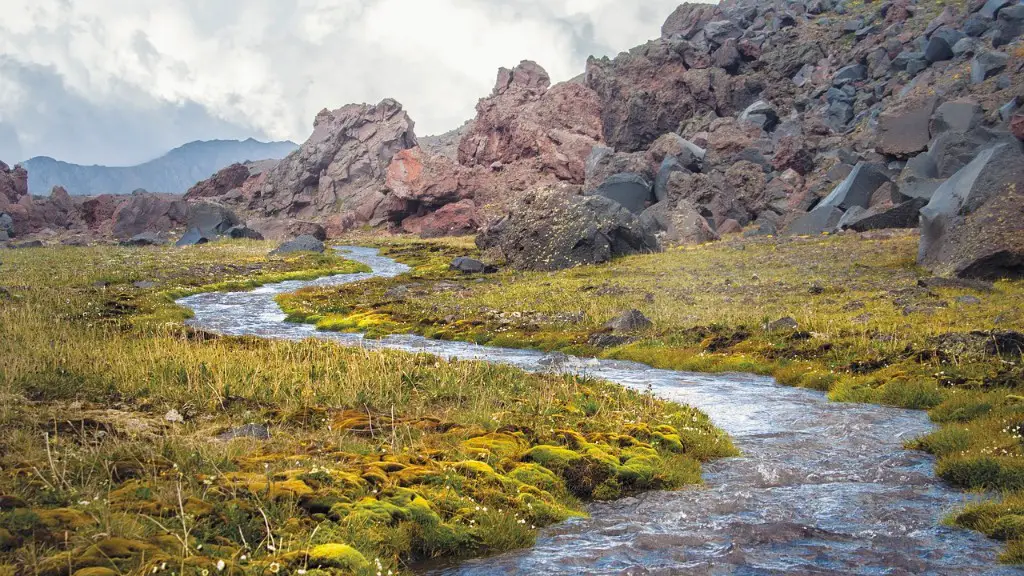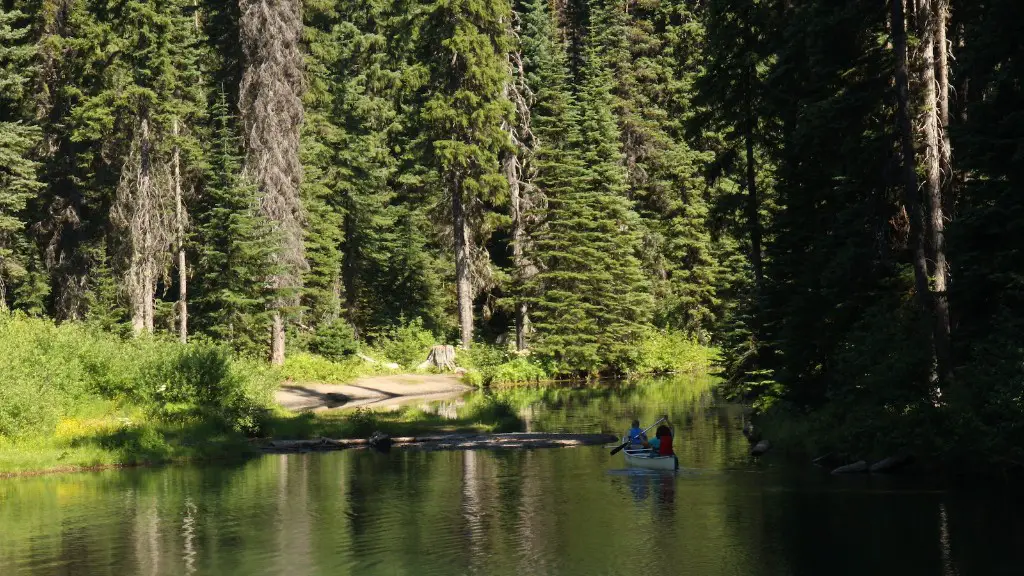Where is the Nile River located? The Nile River is one of the longest rivers in the world, stretching over 4,000 miles long! It is located in Northeastern Africa and is the longest river in the continent. The Nile flows through the following 11 countries: Tanzania, Uganda, Rwanda, Burundi, Democratic Republic of the Congo, Kenya, Ethiopia, Eritrea, South Sudan, Egypt, and Sudan. It begins in Rwanda and Burundi near Lake Victoria and empties into the Mediterranean Sea in Egypt. Along its journey, it crosses major cities such as Cairo and Khartoum.
The river has an extraordinary history, being the longest river in Africa and one of the world’s few rivers that begin in the desert. In ancient Egypt, it was vital to the country’s development and many notable structures such as the High Aswan Dam, the Pyramids of Giza, and many monuments like Luxor temple and the Temple of Philae. Some of the world’s earliest civilizations lived along the banks of the Nile, which became famous because of its nearly annual flooding season. This flooding season was believed to provide fertility to the land as the waters spread rich silt along the river’s banks.
The importance of the Nile River to Africa cannot be understated. It has long been a major source of food, fuel, transportation, and energy in the region. It is estimated that over 300 million people in the countries it passes through depend on the river for their sustenance or livelihoods. Moreover, the Nile is an important and large source of hydroelectric power and is tapped for irrigation projects that support cash crops and local productivity. This has helped to alleviate poverty in some of the more rural parts of the countries.
The river’s ecological importance is also undeniable. It is home to 400 species of fish and over 100 species of mammals and reptiles. It is rich in biodiversity and is part of complex ecosystems in the region. Scientists have identified several endangered species such as the Egyptian cobra, the African cheetah, and the African wild dog that depend on the lush surroundings of the Nile to survive.
The Nile River is also essential for major cities located along its banks. Cairo is the largest city that it travels through. Its main source of sustenance due to the river is still agriculture, but it also has several industrial hubs and efforts to find renewable energy sources in the region. Khartoum is located at the convergence of the Blue and White Niles, which has made it a major economic hub in the region.
Economic Impact of the Nile River
The Nile River has had a tremendous impact on the economic health of the countries and regions along its banks,and the people living there depend on it for sustenance and their quality of life. For example, the Egyptians heavily rely on the Nile for food security, water access and irrigations, which has enabled them to develop large agricultural industries and expand their cash crops.
In addition to agriculture, the Nile has been a major source of hydroelectric power for the greater region for decades. This has been the basis for industry and provided a way for the countries it passes through to develop their economies. The hydroelectric power generated from the Nile is enough to serve the entire region and has allowed the countries to export hydroelectricity to nearby countries and generate revenue from it.
The river has also made a significant contribution to the tourism industry in the region. Its diverse history, biodiversity, and scenic beauty make it a popular destination for tourists. For example, tourists flock to the Great Pyramids of Giza, Luxor Temple, and the many other ancient monuments and natural wonders that are located along the Nile’s banks. Furthermore, cruise ships and Nile ferry boats are popular transportation routes, offering tourists an amazing view of the river and its majestic surroundings.
Environmental Challenges
Despite its importance to the region, there are a number of environmental and economic challenges that the Nile River faces. For one, the river is under immense pressure from overpopulation and pollution. In recent years, several countries along the Nile have experienced rapid population growth. This has led to a number of environmental issues such as deforestation, water shortages, and over-fishing. In addition, sewage and industrial pollution have caused further harm to the health of the river.
The river is also blighted by damming and irrigation projects. These have been put in place for the purpose of irrigating land for agricultural productivity and generating hydroelectric power, but have had the unfortunate side effect of reducing the natural flow of the river. This affects the lifecycle of fish, plant life, and other species that depend on the river’s ecosystem for their existence.
Moreover, climate change is another major threat to the health of the river. Global warming has led to an increase in heat that is leading to severe droughts and floods. The Nile is particularly vulnerable to these atypical weather events, making it important for the countries along it to work together to mitigate their effects.
Preserving the Nile River
Given the ecological and economic importance of the Nile River, it is paramount that steps are taken to ensure its health and preservation. This can be accomplished through resource management policies, energy conservation, and pollution control laws. In addition, countries along the river should work together to ensure that the river is a source of clean Drinking water, is protected from over-fishing, and that its ecosystems are maintained.
The countries should also create better infrastructure and management systems that allow them to utilize the resources they need while still maintaining the health of the river. This includes modernizing infrastructure such as dams and better coordinating its use of resources among the countries. Moreover, research should be conducted on the effects of climate change and ways to adapt and reduce its effects should be explored.
The Impact of the Nile River on Local Communities
The Nile River has provided sustenance and livelihoods to communities located along its banks for centuries. It has been the source of food, water, and energy for these communities, and its strategic position between countries has allowed for the development of transportation and cultural exchange. In addition, it has played a vital role in the development of ancient civilizations and monuments that have become world-renowned cultural wonders.
The river has also helped spur economic growth in the region. Many of the countries along the Nile River have experienced a rise in agricultural exports, fishing industries, and the development of local businesses. In particular, the power generated from the river has created needed energy and economic opportunities in the region.
At the same time, the economic and development benefits of the Nile River have been unevenly distributed within the countries it passes through. Some communities located along the river have enriched their economies but are still facing issues of poverty or lack of resources. This is due to the unequal resources available to communities and a lack of access to hydroelectric power and other resources. This emphasizes the importance of creating more equitable access and use of the river’s resources.
International Cooperation to Preserve the River
The importance of the Nile River is recognized by many and there has been an effort by governments and international organizations to preserve its health. There has been a push towards improved resource management and a better understanding of the impacts of climate change. International organizations such as the United Nations are leading research and policy initiatives that are aimed at promoting better resource management and conservation. These initiatives are also striving to ensure a more equitable distribution of the economic benefits that the river supports.
In addition, the countries located along the Nile River have sought to improve their cooperation in order to protect and manage the river’s resources. This has included inter-country agreements and river-crossing policies that prioritize the health and sustainability of the river. These agreements have seen some success, but there is still work to be done in order to ensure the long-term health of the ecology and economics in the region.
Conclusion
The Nile River is one of the longest rivers in the world and provides crucial sustenance for the countries and people located along its banks. It is the source of food, water, and energy, and a key region for biodiversity. However, the river faces economic and environmental challenges that must be addressed if it is to remain healthy and viable in the future. Thus, it is important that countries work together to protect the river, prioritize equitable access to its resources, and focus on conservation efforts.




